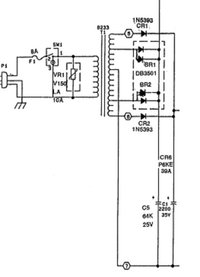View attachment 36063View attachment 36064I have a TRIPP-LITE PR-40 power supply that I need to find a replacement rectifier for. It has a strange setup that uses a full wave rectifier. At least that is what I think it is. The rectifier has the usual two AC inputs , but the outputs are both positive. Normally it would have a pos and neg output. It looks to have a center tapped transformer. That makes me think It is a full wave. I can't find the part anywhere. YouDoIt had no idea. I need someone who knows electronics to help out. The company will not give out parts or schematics.
Thanks
Thanks
Last edited:


![Laugh [laugh] [laugh]](/xen/styles/default/xenforo/smilies.vb/012.gif)